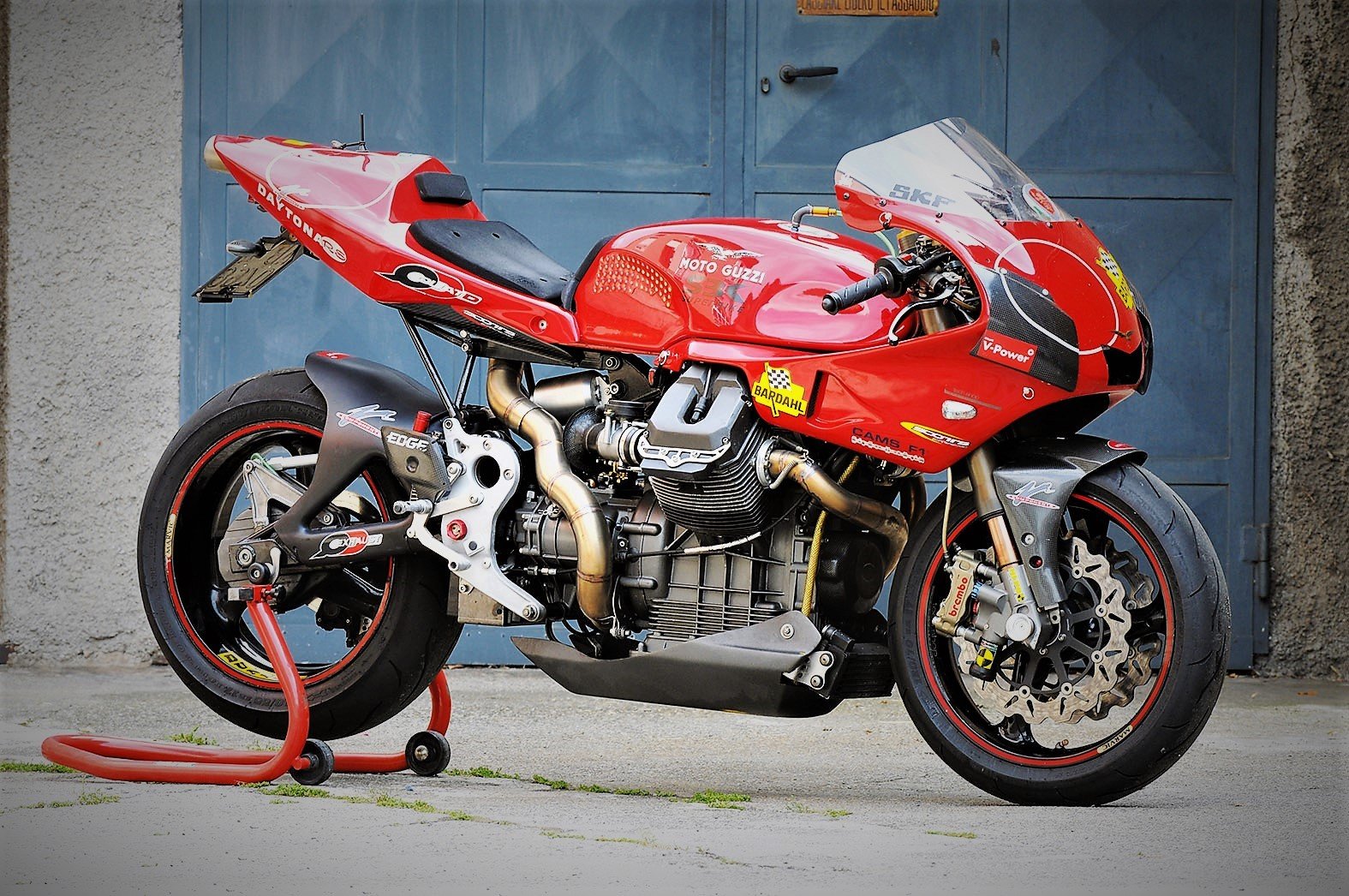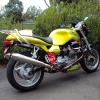-
Posts
5,230 -
Joined
-
Last visited
-
Days Won
268
Content Type
Profiles
Forums
Events
Gallery
Community Map
Everything posted by Lucky Phil
-
I agree, I just purchased 2 Chinese made right angle ignition sensors ( I bought 2 because they were cheap, I mean $10US each and it made no difference to the postage) During my research I found many,many options from many different European business sources that were in a range of 15 to 30 US dollars. Now considering that the cheapest OEM genuine one I could find was around 125 US dollars then these cheaper (visually identical to mine) versions were obviously Chinese made as well. My conclusion is 2 part. 1... The cheap 20-30 US dollar versions sold by European outlets are in fact the same as mine and probably from the same manufacturer with a profit margin applied. 2... There was such a proliferation of them available from reputable outlets that its unlikely they were terrible quality. I mean what reputable company would want the risk to reputation and the hassle of selling a relatively small amount of sensors in the grand scheme of things for a profit of 5 to 10 dollars a piece if they are going to leave customers stranded on the side of the road all over Europe. I guess time will tell if my logic holds up. Ciao
-
How anybody allows a clutch to degenerate into that condition I dont know. I'm not surprised the flywheel failed trying to cope with the results of that magnitude of wear and the mechanical stress it would have caused. Ciao
-
My recollection is that Guzzi used RAM components for the single plate clutch with the exception of the flywheel which was a non RAM unit. I've not heard of a RAM aluminium flywheel failing and I doubt that RAM would still have been selling them 12 years after they started to fail on the std bikes if they were an issue. It sounds to me like the brew ha ha from the 80's with regards to Magnesium wheels on road Ducati's. Speedline Magnesium wheels were problematical for a time and Campagnolo mag wheels which were fine got caught up in the whole "Magnesium motorcycle wheels are fragile and dangerous" debate and legislation. I experience a bad crash with a Ducati fitted with Campags and can tell you they bend and not shatter. Same here with regards to RAM flywheels I think and they probably just went to steel as the weight saving with alloy is negligible. Steels probably cheaper as well. Ciao
-
How the hell does that happen? I mean 2mm!!!! Ciao
- 39 replies
-
- rosso mandello
- v11
-
(and 2 more)
Tagged with:
-
So here we are and I'm calling this finished. Did the final job today in making a camshaft pulley holding tool so I could torque up the cam retaining nuts. I finished off the cam timing a few days ago which on this engine is really easy. Briefly you find TDC on the L/H cylinder ( with the full stop method in this case) and rotate the engine in its DOR until the its 49.5 deg BBDC and then with the rockers removed from the engine and a dial indicator on the exhaust lifter you turn the cam anticlockwise from the base circle until you get .040 (1mm) of lift. All this is done with the belts and pulleys fitted and the cam micrometer adjusting drives removed. You then just move the cam drive adjuster around until the splines on the camshaft and pulley line up and install. Turn the engine 270 deg to TDC on the R/H cylinder fit another TDC indicator and re set the degree wheel and repeat. Home made TDC stop tool Home made cam pulley holding tool. Cam pulley and micrometric adjusting drive Here's how I had the dial indicator set up. Just a piece of steel ( in this case a Ducati bevel drive exhaust nut tool) bolted to the rocker cover flange and a magnetic stand with dial indicator operating directly onto the exhaust lifter. I forgot to take a photo during the timing task but this is the setup with the rocker installed. Both rockers are removed during the cam timing operation. Finished engine And dressed. Ciao
-
Yes docc when I change the fluid in my wifes car 6 or so months ago I was struggling to get uncontaminated fluid indication on my tester until I actually checked the fluid out of the new bottle and found it to be 1% already!!! I had some old fluid in a sealed bottle I had had for years and checked it and it was zero. I'll be opening any new stuff I buy at the store in future and testing it before I lay down my money thats for sure. Ciao
-
Thanks man I see how I go! Ciao
-
Sounds like a good excuse to me whether the timing issue is true or not. Ciao
-
Yes that would be confusing, how did it run? I would like to get the lift measurements for the C kit cam but no one seems to have the lift figures. Guzziology has the timing specs but not the lift. If you ever come across one I can borrow Pete I might be interested in using my spare cams to see if I can get some C kit ones ground off them. Ciao
-
I dont have a CAD file Chuck, but I'm a little IT challenged. Guzzi diag is going to be interesting for me although I can work the program for the 1198's Microteck ecu so we'll see. Ciao
-
Sorry docc I may have got you worrying for nothing. I went down and had a good look at my spare gearbox and the ring nut looks to be bi-directional IE it had a taper on both faces. If you look carefully at the back side of the nut you will see its equally tapered. There is no part number difference between any of the V11 6 speed gearbox ring nuts either. Ducati bevel drive countershaft ring nuts were also similar to this but one face was totally flat and the and the other tapered. It seemed natural to fit the flat face inwards but I later read that this was incorrect and when you thought about it although counter intuitive it made sense from an engineering point of view. With the one sided flat faced nut it fouled slightly the tabs on the lock washer with the flat face against it and also presented a larger surface area to the washer which created more friction during tighteneing and a different torque so they regularly came loose. So looks like I'm wrong about this and sorry again. The image of the Guzzi ring nut had me automatically visualizing a Ducati one. It looks like the Guzzi one can be fitted either way. Rest easy, I feel really bad. Ciao
-
A breach of hammer and engineering etiquette. Ciao
-
Your ring gear looks identical to my RAM unit fitted to the Daytona engine on my bench. Ciao
-
Yep thats what I meant you to do. Why have you removed the ring gear bolts? You could even use your original gearbox input hub if its not worn. BTW the image of the gearbox input hub ring nut in doccs post is shown fitted the wrong way around. The tapered face goes towards the gearbox side. Ciao
-
^^^ Same here Ciao
-
Just knock out the supplied hub and use your 6 speed one. You might need to turn the fitted one to get the splines to line up if the're out and then pull/tap it out from the engine side. Looks to me like they have just slid it in there for packaging and transport purposes. Ciao
-
Plugging away at this. Oil pump is in and front cover on. I've made up a cam belt tensioning tool which looks a bit ordinary but works ok. Chuck sent me a file of its dimensions but I couldnt open it because I didnt have the software but when you see an image of one its so simple and you cant get it wrong anyway. Thanks anyway Chuck, just avert your eyes as its ahem....rustic. Turns out it gives you about what I thought the belt tension would be so I'll set it by feel like I do a Ducati belt. I also modified the pulley flanges so you can change the belts with the pulleys still fitted. Basically just the cam timing to do. The "tool" Pulley mod so you can replace the belts. Standard you struggle to get the belts out as they fowl on the casing. The r/h belt pulley inner flange had to be done also and line up with this one. Cam timing to go.






